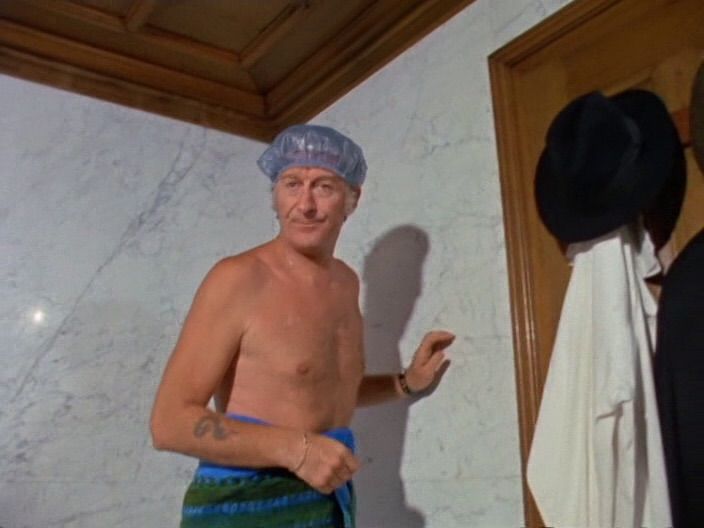**SPOILERS AHEAD, CONSIDER YOURSELF WARNED!**
I don’t have a lot to say about “Knock Knock.” It’s not a bad episode but it’s not a great one either, it’s just sort of…middling. The idea of a house seeming to be haunted due to alien activity is nothing new to Doctor Who — the Seventh Doctor serial “Ghost Light” did it very well back in 1989 — and “Knock Knock” certainly gets the spooky atmosphere right. (I love how Shireen calls the mansion “a freaky Scooby Doo house.”) The story, though? Well, this is another one of those episodes it’s best not to look at too closely or you’ll wind up with a whole lot of questions: Why is Pavel’s demise different from everyone else’s, getting sucked into a wall when all the other students were swarmed and eaten by the Dryads? In the past, when the Dryads were brought to Eliza’s sick room, why didn’t they eat Eliza? How and why did they turn her into an undead wooden person instead? Will Bill’s foster mother Moira, introduced in the episode “The Pilot,” ever be seen again, or will she simply disappear like Clara’s charges in season seven or Amy’s other friend Jeff from “The Eleventh Hour”? The questions go on.
One thing I really liked about “Knock Knock” is that it separates the Doctor and Bill and allows each of them to deduce what’s going on individually, which means we get to see how smart and resourceful Bill is when she’s on her own. She’s definitely not someone who just exists to be rescued or ask the Doctor questions on behalf of the audience. Also, it’s fun to see the Doctor running around the house with Harry instead, which reminds me how much I’d love to see a male primary companion again someday. Where “Knock Knock” drops the ball, though, at least in my opinion, is in not having the courage of its convictions. Bill’s friends are physically devoured by the Dryads and their energy is presumably funneled to Eliza to keep her alive. (There’s no explanation how this works. It’s all rather handwaved away.) So how on earth are these dead characters “returned” at the end? There shouldn’t have been anything left of them. Negating their deaths in such a quick and nonsensical way gives “Knock Knock” the feel of an episode of the old Goosebumps TV show rather than Doctor Who, as if to reassure children that there’s no need to be so frightened. It’s a crucial misstep in an otherwise okay episode.
And now for some Doctor Who neepery! When the Doctor asks the Landlord who the Prime Minister is, there’s a nice mention of Harriet Jones, a recurring but now deceased character who dates all the way back to the very first season of the revival and became Prime Minister in the second season. The Doctor finally reveals to Bill that he’s a Time Lord, not a human, and there are some funny lines about Time Lords’ big, fancy collars. The Doctor also mentions that Time Lords can regenerate, perhaps to foreshadow what’s to come, although he doesn’t elaborate on it. We see the vault again at the end, with its unseen inhabitant playing the piano inside as the Doctor arrives with food and the promise of interesting stories to tell. I’m now more convinced than ever that it’s the Master inside the vault, either as his John Simm incarnation or as Missy. I kind of want to be wrong, though, because I want to be surprised.
I’m still not enjoying the increased antagonism between the Doctor and Nardole. I don’t know why they’ve decided to make Nardole such a nag when he could be much funnier instead. Free Nardole!



